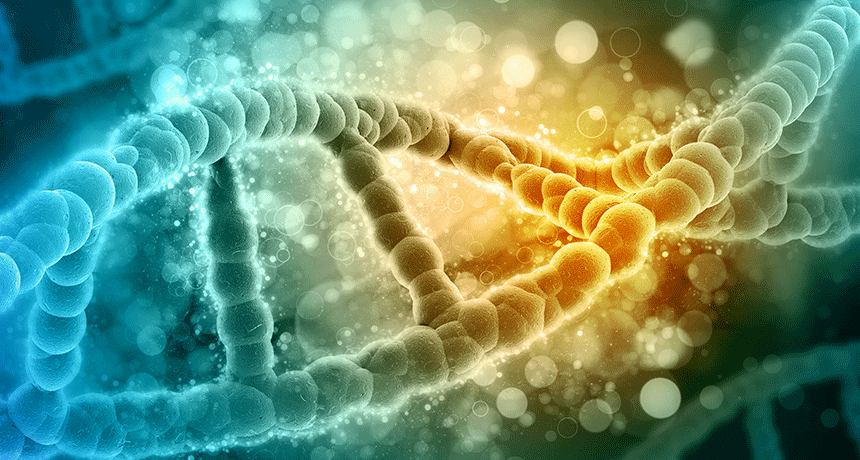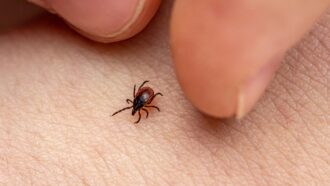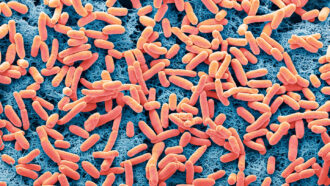Explainer: How CRISPR works
This technique lets scientists edit DNA in plants and animals

Scientists are using a tool called CRISPR/Cas9 to edit DNA.
kirstypargeter/iStockphoto
Scientists usually shy away from using the word miracle. Unless they’re talking about the gene-editing tool called CRISPR, that is. “You can do anything with CRISPR,” some say. Others just call it amazing.
Indeed, it amazed so many people and so swiftly that just eight years after they discovered it, Jennifer Doudna and Emmanuelle Charpentier took home the 2020 Nobel Prize in chemistry.
CRISPR stands for “clustered regularly interspaced short palindromic repeats.” Those repeats are found in bacteria’s DNA. They are actually copies of small pieces of viruses. Bacteria use them like collections of mug shots to identify bad viruses. Cas9 is an enzyme that can cut apart DNA. Bacteria fight off viruses by sending the Cas9 enzyme to chop up viruses that have a mug shot in the collection. Scientists recently figured out how bacteria do this. Now, in the lab, researchers use a similar approach to turn the microbe’s virus-fighting system into the hottest new lab tool.
This CRISPR/Cas9 tool was first described in 2012 and 2013. Science labs around the world soon started using it to alter an organism’s genome — the entire set of its DNA instructions.
This tool can quickly and efficiently tweak almost any gene in any plant or animal. Researchers already have used it to fix genetic diseases in animals, to combat viruses and to sterilize mosquitoes. They have also used it to prepare pig organs for human transplants and to beef up the muscles in beagles.
So far CRISPR’s biggest impact has been felt in basic biology labs. This low-cost gene editor is easy to use. That has made it possible for researchers to delve into the basic mysteries of life. And they can do it in ways that used to be difficult if not impossible.
Robert Reed is a developmental biologist at Cornell University in Ithaca, N.Y. He likens CRISPR to a computer mouse. “You can just point it at a place in the genome and you can do anything you want at that spot.”
At first, that meant anything that involved cutting DNA. CRISPR/Cas9 in its original form is a homing device (the CRISPR part) that guides molecular scissors (the Cas9 enzyme) to a target section of DNA. Together, they work as a genetic-engineering cruise missile that disables or repairs a gene, or inserts something new where the Cas9 scissors has made some cuts. Newer versions of CRISPR are called “base editors.” These can edit genetic material one base at a time, without cutting. They’re more like a pencil than like scissors.
Here’s how it works
Scientists start with RNA. That’s a molecule that can read the genetic information in DNA. The RNA finds the spot in the nucleus of a cell where some editing activity should take place. (The nucleus is a compartment in a cell where most of the genetic material is stored.) This guide RNA shepherds Cas9 to the precise spot on DNA where a cut is called for. Cas9 then locks onto the double-stranded DNA and unzips it.
This allows the guide RNA to pair up with some region of the DNA it has targeted. Cas9 snips the DNA at this spot. This creates a break in both strands of the DNA molecule. The cell, sensing a problem, repairs the break.
Fixing the break might disable a gene (the easiest thing to do). Alternatively, this repair might fix a mistake or even insert a new gene (a much more difficult process).
Cells usually repair a break in their DNA by gluing the loose ends back together. That’s a sloppy process. It often results in a mistake that disables some gene. That may not sound useful — but sometimes it is.
Scientists cut DNA with CRISPR/Cas9 to make gene changes, or mutations. By comparing cells with and without the mutation, scientists can sometimes figure out what a protein’s normal role is. Or a new mutation may help them understand genetic diseases. CRISPR/Cas9 also can be useful in human cells by disabling certain genes — ones, for instance, that play a role in inherited diseases.
“The original Cas9 is like a Swiss army knife with only one application: It’s a knife,” says Gene Yeo. He is an RNA biologist at the University of California, San Diego. But Yeo and others have bolted other proteins and chemicals to the dulled blades. That has transformed that knife into a multifunctional tool.
CRISPR/Cas9 and related tools can now be used in new ways, such as changing a single nucleotide base — a single letter in the genetic code — or adding a fluorescent protein to tag a spot in the DNA that scientists want to track. Scientists also can use this genetic cut-and-paste technology to turn genes on or off.
This explosion of new ways to use CRISPR hasn’t ended. Feng Zhang is a molecular biologist at the Massachusetts Institute of Technology in Cambridge. He was one of the first scientists to wield the Cas9 scissors. “The field is advancing so rapidly,” he says. “Just looking at how far we have come…I think what we’ll see coming in the next few years will just be amazing.”
This story was updated on October 8, 2020 to note the Nobel committee’s decision to award CRISPR’s discovery the 2020 prize in chemistry.







